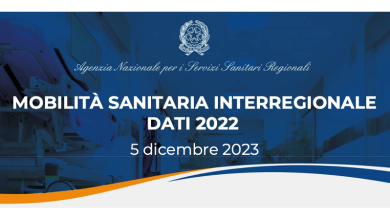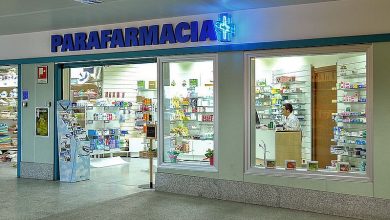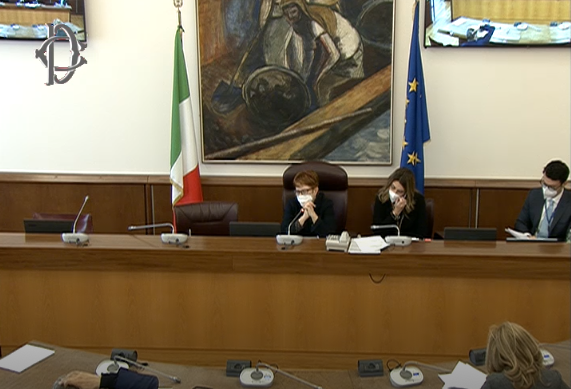
In recent years "a shift has been noted" in the distribution of medicines through the channel on behalf, i.e. through affiliated pharmacies, "to the detriment of direct distribution", i.e. the one which 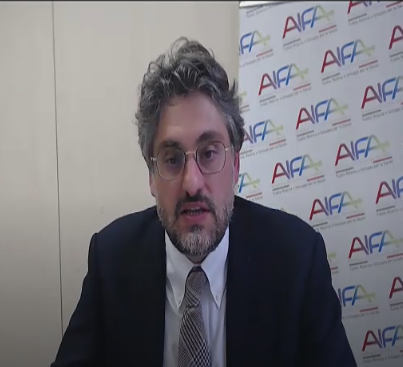 occurs through health care facilities. The data, in fact, show, "from 2018 to 2021, an increase in the use of the distribution channel on behalf and a decrease in the use of class A direct distribution", which includes essential medicines and for chronic diseases.
occurs through health care facilities. The data, in fact, show, "from 2018 to 2021, an increase in the use of the distribution channel on behalf and a decrease in the use of class A direct distribution", which includes essential medicines and for chronic diseases.
As Francesco Trotta, manager of the Pharmaceutical Expenditure Monitoring Office of the Italian Medicines Agency (Aifa), during the hearing in the Social Affairs Commission of the Chamber, as part of the fact-finding survey on 'direct distribution' and 'on behalf'. “Direct distribution and distribution on behalf”, he explained, “have a total value in economic terms of over 8 billion, which correspond to purchases made by the National Health Service, and are heterogeneous throughout the territory.
There are regions that have a direct direct distribution, among which Emilia-Romagna is highlighted, where it reaches an incidence of 90% on the total”. To make them comparable, he continued, we need to focus on the direct distribution of category A (i.e. medicines not administered directly in the hospital, which are instead 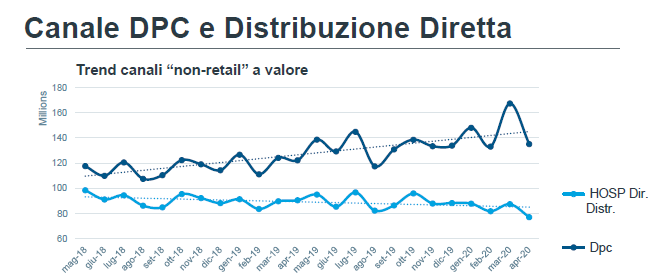 called category H) and which concerns drugs for chronic diseases: "out of 6.6 billion, the value of expenditure for chronic patients is worth 4 billion".
called category H) and which concerns drugs for chronic diseases: "out of 6.6 billion, the value of expenditure for chronic patients is worth 4 billion".
The distribution on behalf, on the other hand, is worth about 2.1 billion and includes, for example, "new oral anticoagulants, antidiabetics, immunosuppressants and some anticancer drugs". At the moment, concluded the Aifa expert, "there is no evidence of a different compliance, or adherence of the patient to the therapy, with respect to the two methods of distribution, but we want to conduct specific in-depth studies to understand if the method of delivery can influence, in one way or another, adherence to prescribed treatment”.
(Regioni.it 4246 – 01/03/2022)
___________________________
Nello Martini in the Chamber: this is why some Regions "inflate" direct and dpc
Supply chain – 25 February 2022
 Some Regions inflate the list of drugs entrusted to the dpc and that of medicines distributed in the first therapeutic cycle to increase the payback, keep the agreed expenditure low and thus obtain a "treasure" that can be used for other purposes. This was stated by Nello Martini, president of the ReS Foundation, in the second round of hearings organized the day before yesterday by the Social Affairs commission of the Chamber as part of the fact-finding investigation on direct distribution.
Some Regions inflate the list of drugs entrusted to the dpc and that of medicines distributed in the first therapeutic cycle to increase the payback, keep the agreed expenditure low and thus obtain a "treasure" that can be used for other purposes. This was stated by Nello Martini, president of the ReS Foundation, in the second round of hearings organized the day before yesterday by the Social Affairs commission of the Chamber as part of the fact-finding investigation on direct distribution.
In 2020, explained the former AIFA dg, the dpc generated an expenditure of around two billion, for an average cost per pack of 40 euros. «Among the medicines that are distributed through this channel» he told the Commission «there are several class A medicines intended for the treatment of chronic pathologies, which therefore would be more correct to place in the circuit of the affiliated company.
Why then are they distributed on account? Primarily for savings, the Local Health Authorities buy them from the industry at a discounted ex-factory price of at least 50%». But, warned Martini, there is also another convenience that pushes to keep drugs in the dpc that would be more appropriate to place in the channel of the agreement: «Standing in the dpc, these medicines are loaded on the expense for direct purchases, where every breakthrough is half covered by industry; the agreed expenditure is thus kept low and the leftovers remain in the availability of the individual Regions ».
In essence, the mechanism would allow the Regions to "penetrate" the pharmaceutical expenditure that passes through local pharmacies, money which would then be used for other items rather than for pharmaceutical assistance. But, warned Martini, la dpc is an outdated and no longer sustainable model, because it generates inequalities and unloads an increasingly less justifiable social cost on patients.
«It is right to maintain direct distribution for highly complex drugs that require drug control 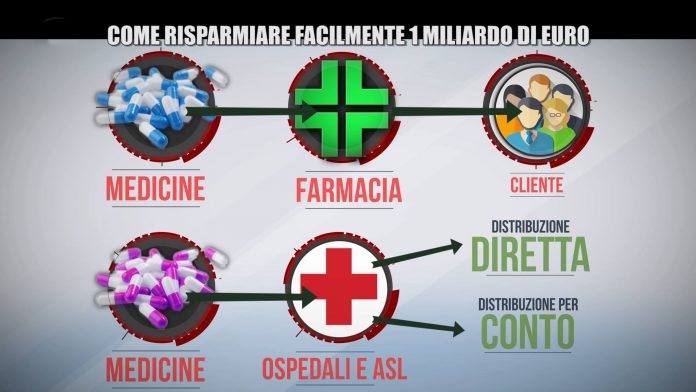 patient» warned the president of the ReS Foundation «perhaps with the addition of home delivery and teleconsultation services so as not to force patients to go to the hospital until the check-up is due». Instead, it is necessary to remove from the dpc and move all the drugs indicated for chronic treatments to the affiliated companies, at the same time solving the problem of economic sustainability with a new remuneration for pharmacies based on a mixed model, fixed fee plus margin. «Let's not forget» Martini recalled «that the percentage margin represented the crisis point of the system when the first generation of personalized, i.e. high-cost, pharmacological therapies arrived».
patient» warned the president of the ReS Foundation «perhaps with the addition of home delivery and teleconsultation services so as not to force patients to go to the hospital until the check-up is due». Instead, it is necessary to remove from the dpc and move all the drugs indicated for chronic treatments to the affiliated companies, at the same time solving the problem of economic sustainability with a new remuneration for pharmacies based on a mixed model, fixed fee plus margin. «Let's not forget» Martini recalled «that the percentage margin represented the crisis point of the system when the first generation of personalized, i.e. high-cost, pharmacological therapies arrived».
Instead, Martini said again, it would be a mistake to insist on the dpc in the hope perhaps of bringing all the live drugs that no longer require monitoring in a protected environment to this channel. Thus, in fact, the pharmacy would be relegated to a sort of distribution "contractor" which would devalue its role and potential. Instead, the most appropriate destination of drugs whose use has by now been "territorialized" (Martini cited incretin and Nao as an example) is the affiliated circuit, also for reasons of fairness: «It is not clear why in Emilia In Romagna the diabetic must go to the hospital to get the drug he needs and in Lombardy instead at the pharmacy », he remarked. "The discretion left to the Regions has created disparities", Martini said clearly, "equity of access must be the bar for reorganizing the system". So enough with different distribution lists from one Region to another and with different fees to pharmacies for the dpc. "The differences must be overcome" concluded Martini "which create enormous inconvenience for patients". We await the reply of the Regions.
_______________________________
Rings (FNOMCeO): also involve the Houses of Community in the dispensation
 The president of Fnomceo Anelli instead framed the question in the context of the transformations which, also on the thrust of the Pnrr, will affect the territorial health organization. So it will have to "expand the direct distribution of medicines, also involving community houses in the dispensing", but also by developing the delivery of medicines to the patient's home "through local pharmacies or with different mechanisms, in any case enhancing the role of general practitioners for prescriptions and pharmacists for dispensing".
The president of Fnomceo Anelli instead framed the question in the context of the transformations which, also on the thrust of the Pnrr, will affect the territorial health organization. So it will have to "expand the direct distribution of medicines, also involving community houses in the dispensing", but also by developing the delivery of medicines to the patient's home "through local pharmacies or with different mechanisms, in any case enhancing the role of general practitioners for prescriptions and pharmacists for dispensing".
"The current rules were born with the aim of improving the equity of access to care" recalled Anelli at the beginning of his speech. "Unfortunately, not all the Regions have fully believed in this mechanism and direct and/or on behalf distribution is applied patchily and in different ways on the territory".
Related news:
Pharmaceutical expenditure, Aifa presents the new Report: "In the first 10 months of 2021 hospital expenditure exceeds the ceiling of 1.6 billion"
In the first ten months of 2021, the pharmaceutical expenditure calculated net of the discounts, the total sharing and the pay-back paid to the Regions by the pharmaceutical companies, is quantified at 6,268.9 million euros. This is the figure that emerges from the AIFA report for the January-October period.
There was a decrease, compared to the same period of the previous year, of -62 million euro. On the contrary, consumption, expressed in number of recipes (455.7 million recipes), shows a slight increase (+1.6 %) compared to 2020, while the incidence of the total ticket is slightly reduced (-1.6%) .
As regards the regional agreed expenditure, supported through the payment of the summary accounting slip to private and public territorial pharmacies, the report shows that the regions with the greatest percentage decline are Sardinia (-5.9%), Molise and Valle d'Aosta (-4.1%) and the Autonomous Province of Bolzano (-2.9%).



